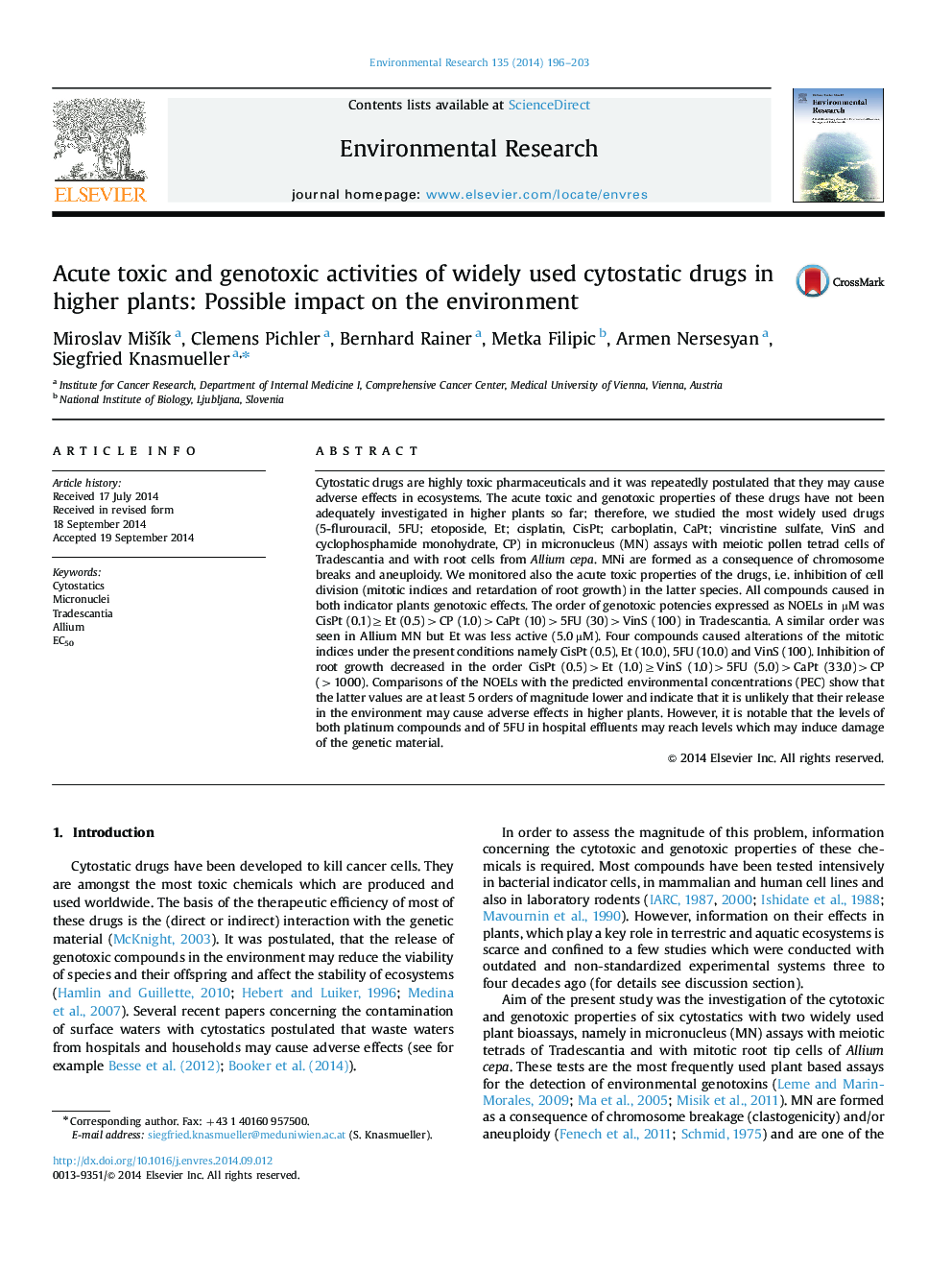| Article ID | Journal | Published Year | Pages | File Type |
|---|---|---|---|---|
| 6352918 | Environmental Research | 2014 | 8 Pages |
Abstract
Cytostatic drugs are highly toxic pharmaceuticals and it was repeatedly postulated that they may cause adverse effects in ecosystems. The acute toxic and genotoxic properties of these drugs have not been adequately investigated in higher plants so far; therefore, we studied the most widely used drugs (5-flurouracil, 5FU; etoposide, Et; cisplatin, CisPt; carboplatin, CaPt; vincristine sulfate, VinS and cyclophosphamide monohydrate, CP) in micronucleus (MN) assays with meiotic pollen tetrad cells of Tradescantia and with root cells from Allium cepa. MNi are formed as a consequence of chromosome breaks and aneuploidy. We monitored also the acute toxic properties of the drugs, i.e. inhibition of cell division (mitotic indices and retardation of root growth) in the latter species. All compounds caused in both indicator plants genotoxic effects. The order of genotoxic potencies expressed as NOELs in µM was CisPt (0.1)â¥Et (0.5)>CP (1.0)>CaPt (10)>5FU (30)>VinS (100) in Tradescantia. A similar order was seen in Allium MN but Et was less active (5.0 µM). Four compounds caused alterations of the mitotic indices under the present conditions namely CisPt (0.5), Et (10.0), 5FU (10.0) and VinS (100). Inhibition of root growth decreased in the order CisPt (0.5)>Et (1.0)â¥VinS (1.0)>5FU (5.0)>CaPt (33.0)>CP (>1000). Comparisons of the NOELs with the predicted environmental concentrations (PEC) show that the latter values are at least 5 orders of magnitude lower and indicate that it is unlikely that their release in the environment may cause adverse effects in higher plants. However, it is notable that the levels of both platinum compounds and of 5FU in hospital effluents may reach levels which may induce damage of the genetic material.
Related Topics
Life Sciences
Environmental Science
Health, Toxicology and Mutagenesis
Authors
Miroslav MiÅ¡Ãk, Clemens Pichler, Bernhard Rainer, Metka Filipic, Armen Nersesyan, Siegfried Knasmueller,
